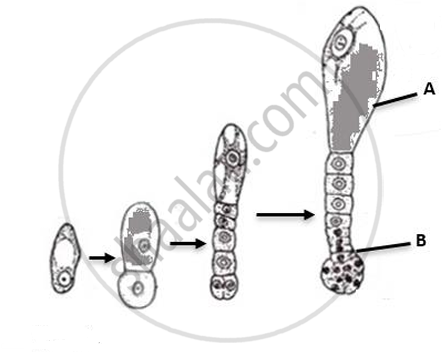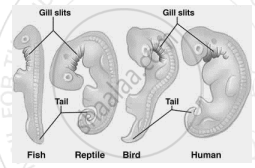Advertisements
Advertisements
प्रश्न
Mention any two functions of the human placenta.
उत्तर
(i)
Placenta helps in the exchange of gases CO2 and O2 between foetus and mother’s blood.
(ii)
It provides nutrition to the developing foetus from the mother’s blood.
(iii)
It helps in excretion of urea, from foetus blood into the mother’s blood.
(iv)
It acts as endocrine gland producing hormones, to maintain pregnancy and helps in parturition and prepare mammary glands for lactation.
APPEARS IN
संबंधित प्रश्न
Medically it is advised to all young mothers that breastfeeding is the best for their newborn babies. Do you agree? Give reasons in support of your answer.
Choose the correct options of the following question:
Eyelids in human foetus separate in :
In the event of pregnancy, the corpus luteum persists under the influence of ______.
Relaxin is the hormone secreted by the placenta.
Which of the following is not a function of the placenta?
Read the following and answer from given below:
Cleavage is the series of rapid mitotic divisions in the zygote and forms blastula. The 2, 4, 8, 16 daughter cells are called blastomeres. An embryo with 64 blastomeres is known as a blastocyst and has a blastocoel cavity. Blastocyst gets implanted in the uterine wall and leads to preganancy.
The solid mass of cells with 16 blastomeres is called ______
Read the following and answer from given below:
Cleavage is the series of rapid mitotic divisions in the zygote and forms blastula. The 2, 4, 8, 16 daughter cells are called blastomeres. An embryo with 64 blastomeres is known as a blastocyst and has a blastocoel cavity. Blastocyst gets implanted in the uterine wall and leads to pregnancy.
The correct sequence of various structures formed during embryonic development is ______
Explain the formation of placenta after the implantation in a human female.
During embryogenesis in dicots, the zygote divides into a basal cell and a terminal cell. The basal cell divides repeatedly to produce a structure called suspensor. Carefully observe the image given below and describe the function of cell – A and cell – B of the suspensor.

Zygote
The diagram given below shows the early embryonic stages of fish, reptiles, birds and humans. Though adult reptiles, birds and mammals breathe air, their embryos possess gills. How does this fact support evolution?

